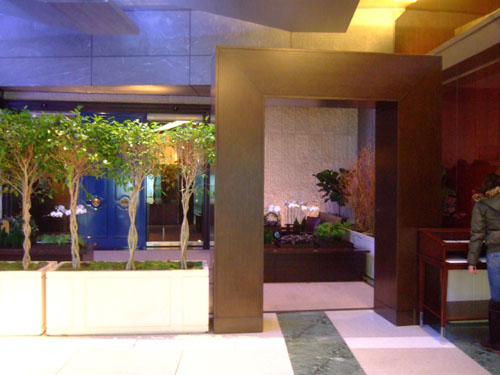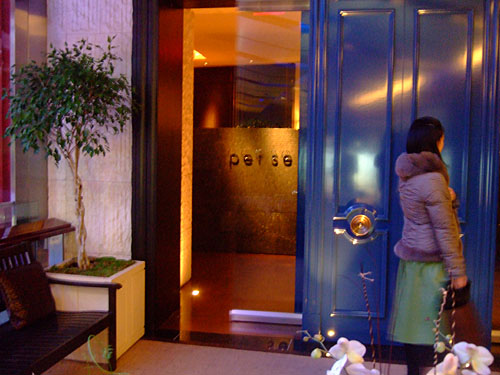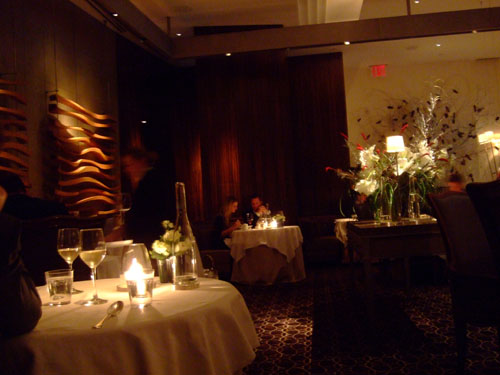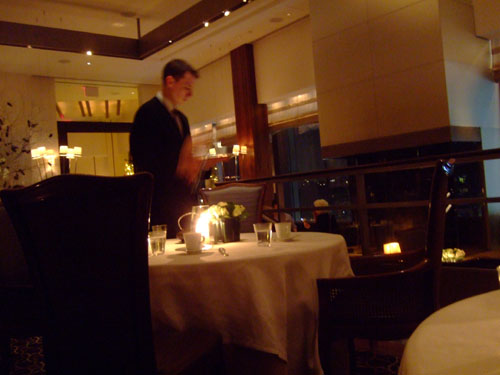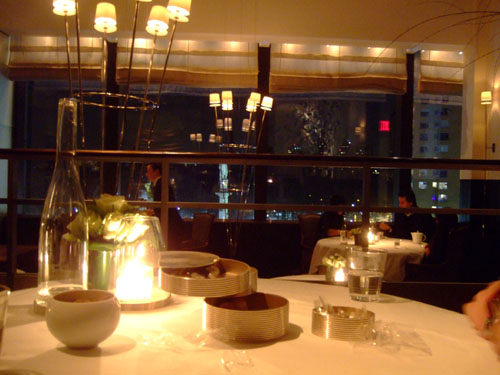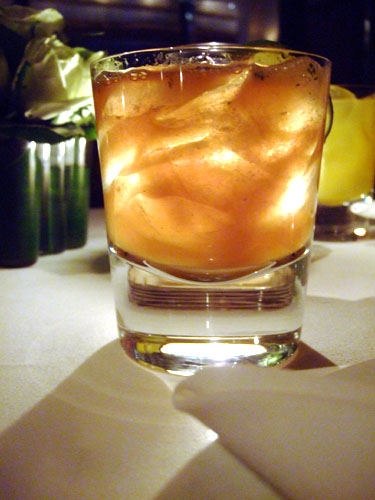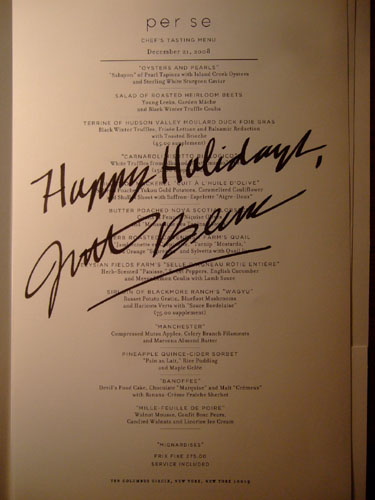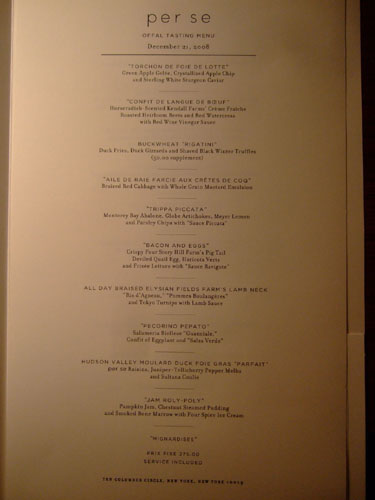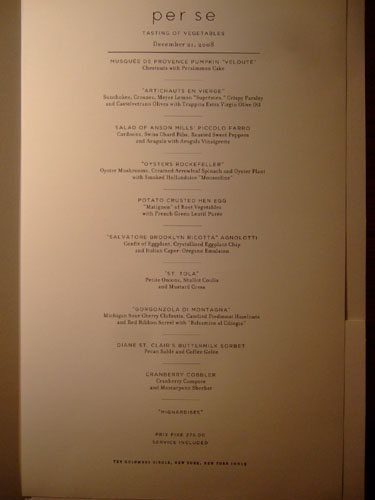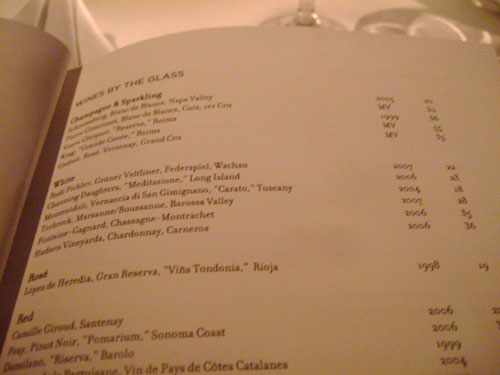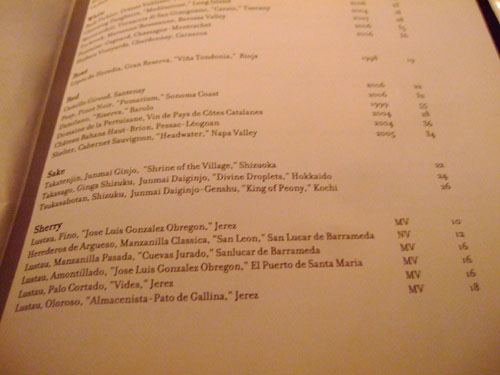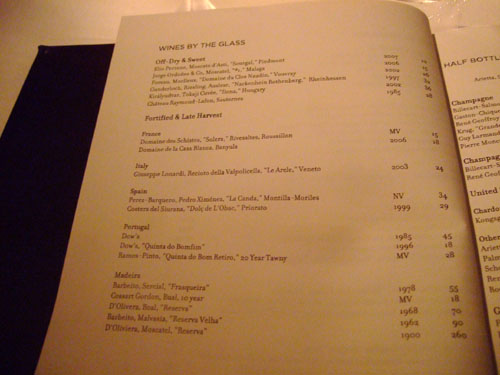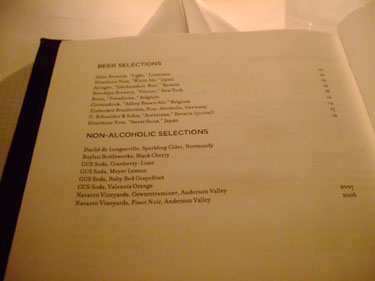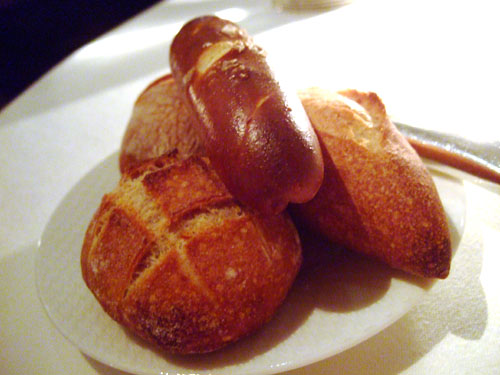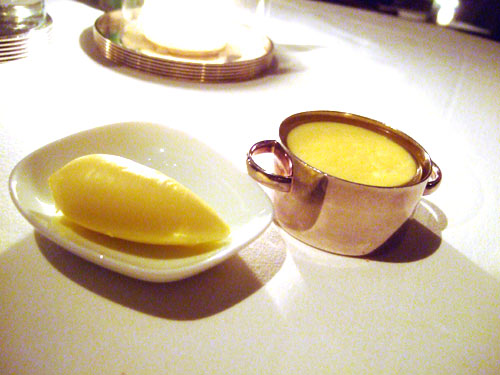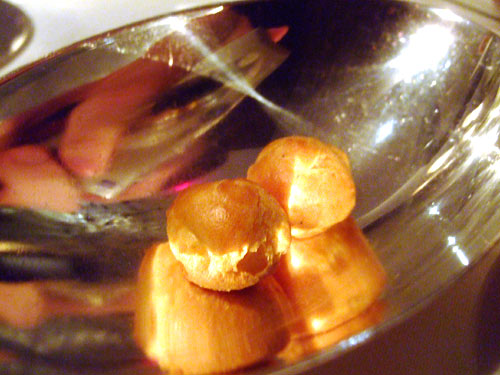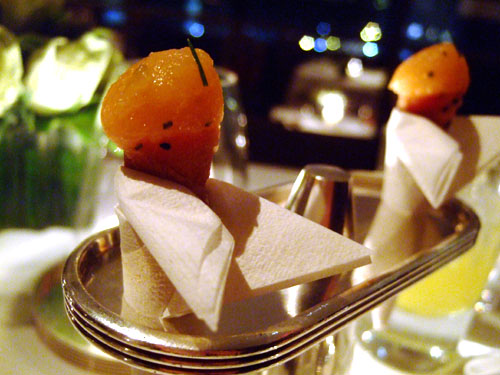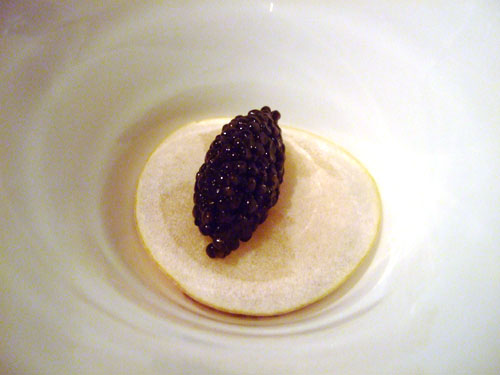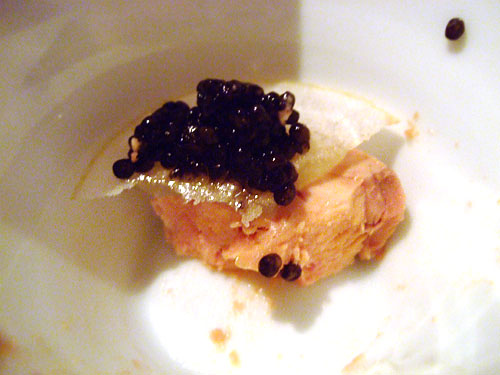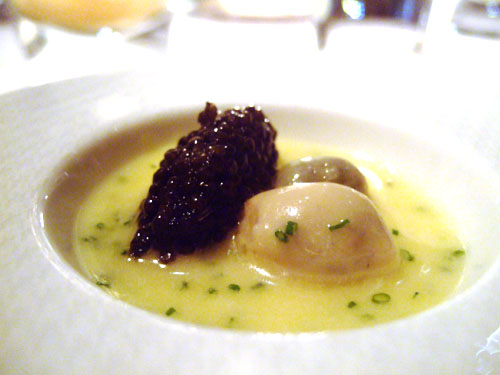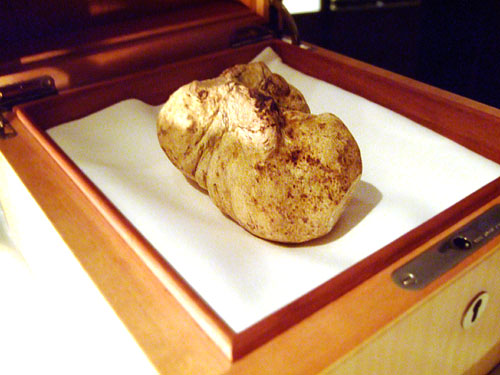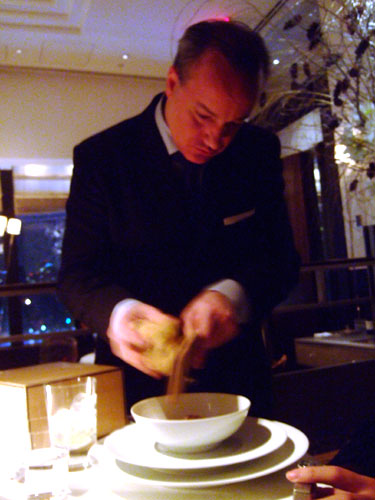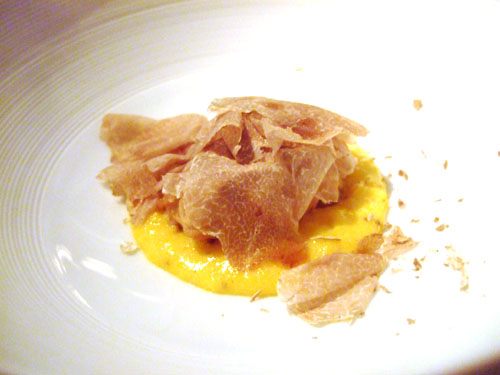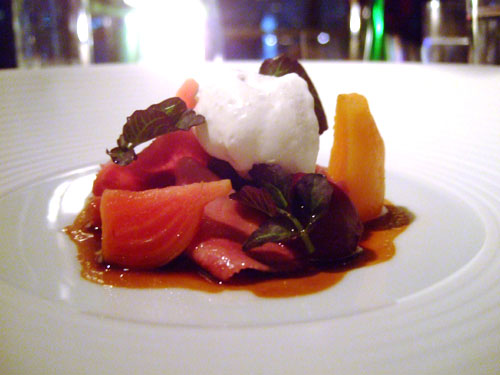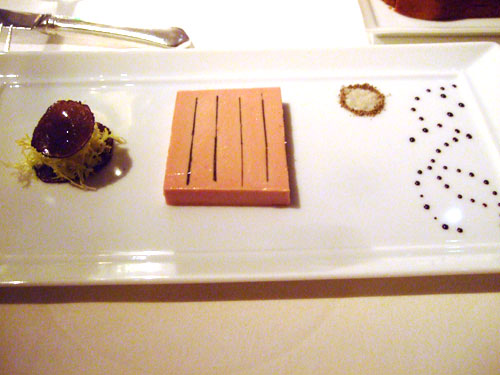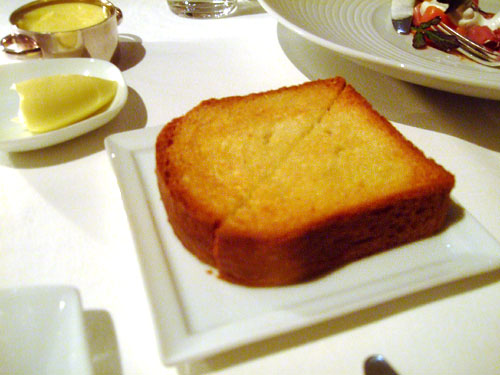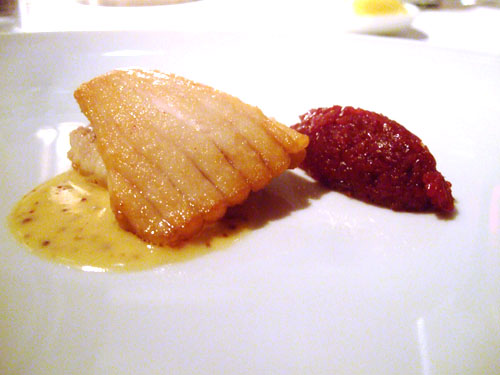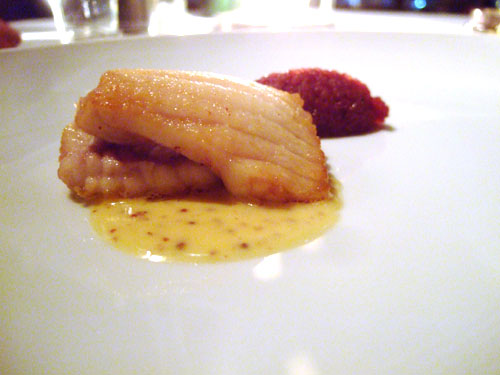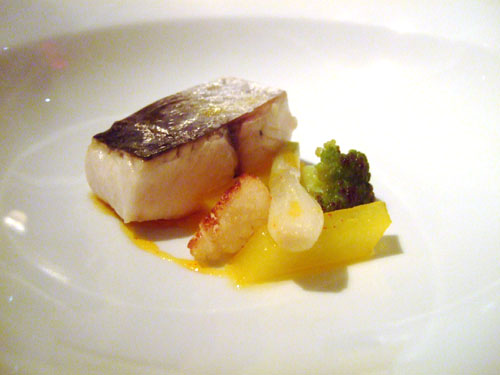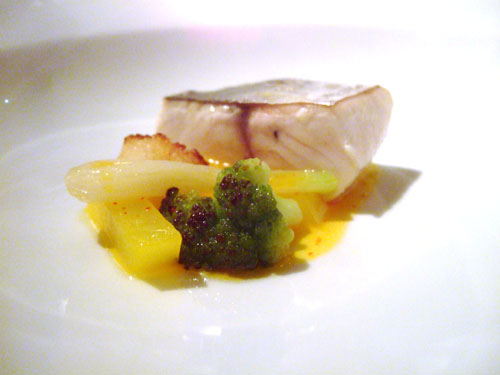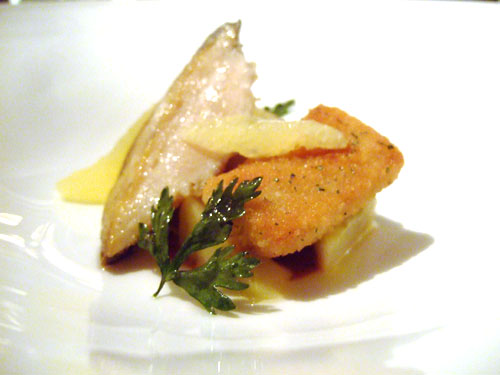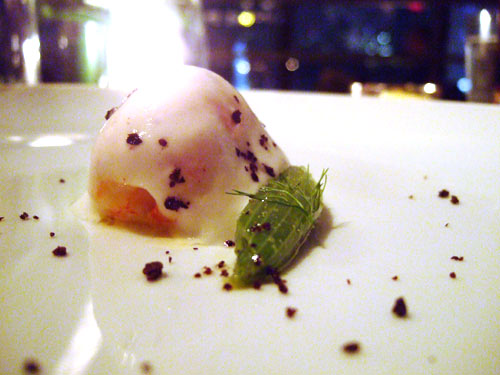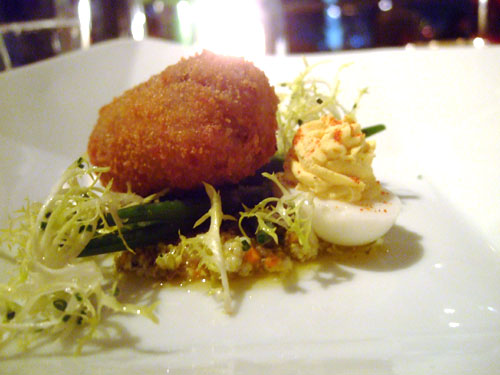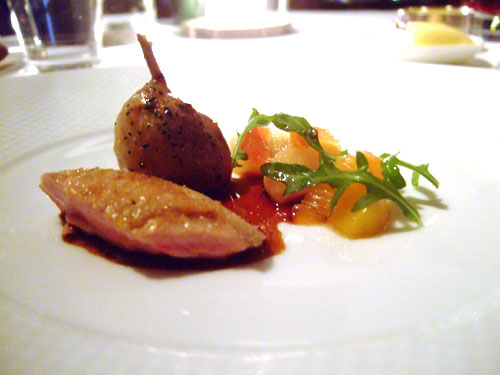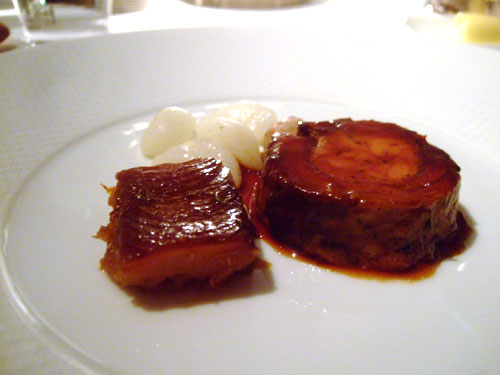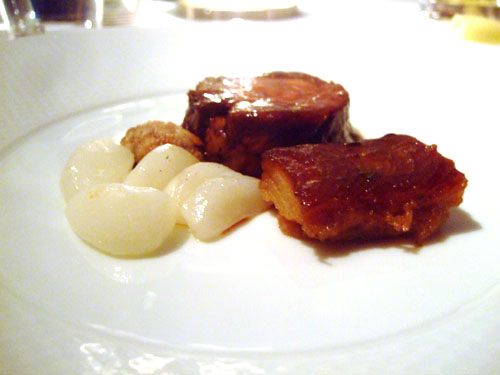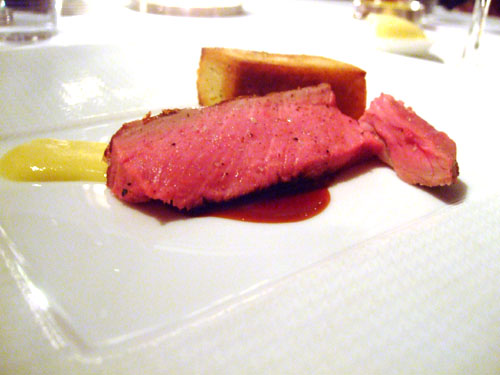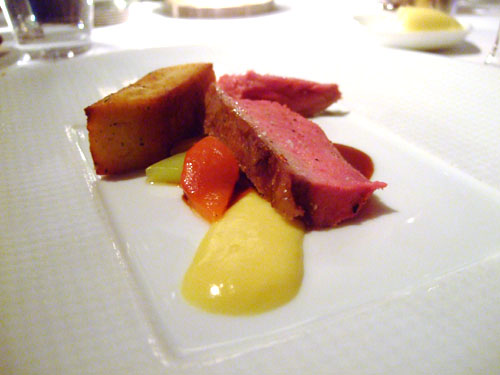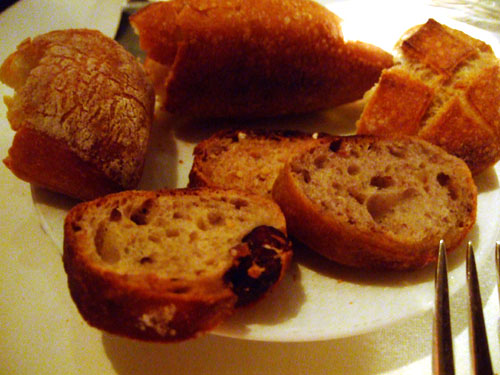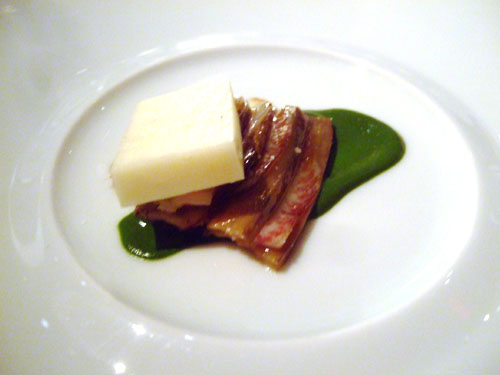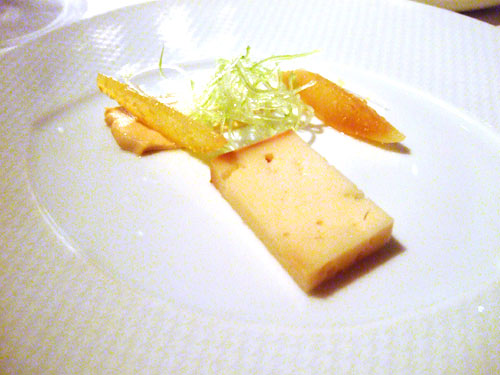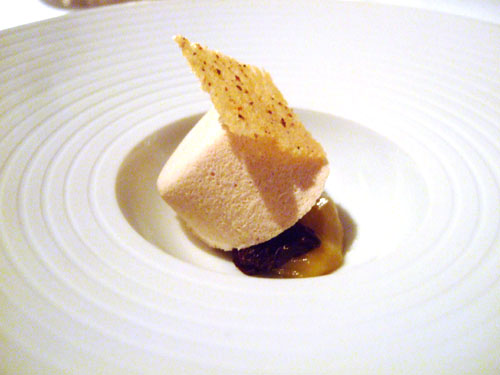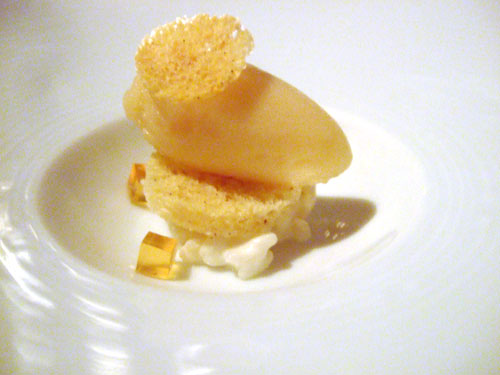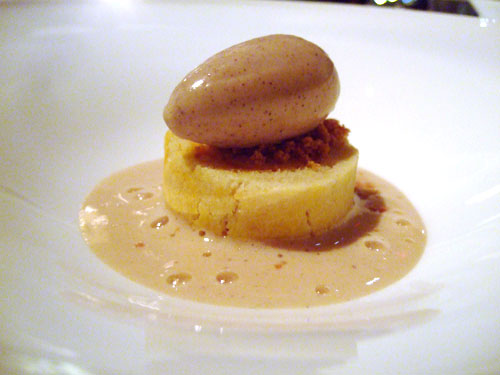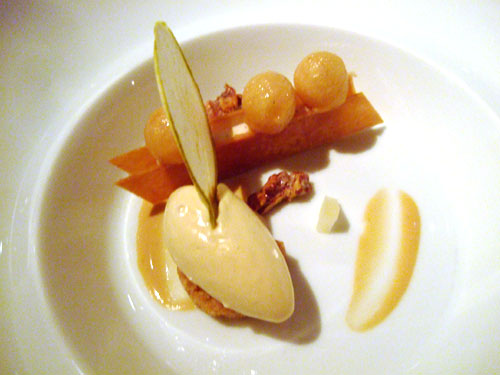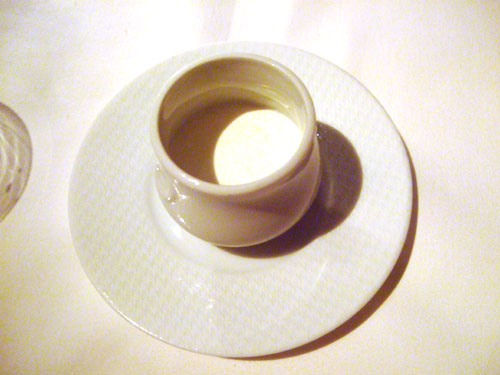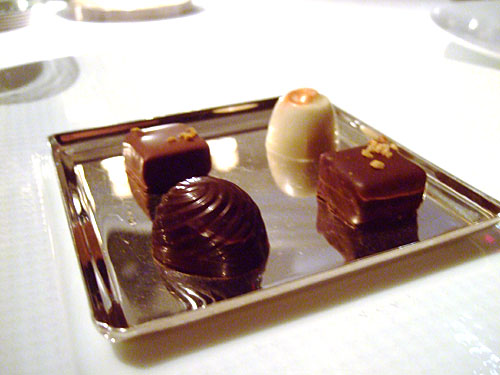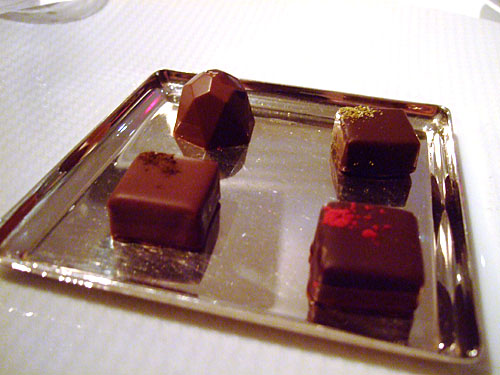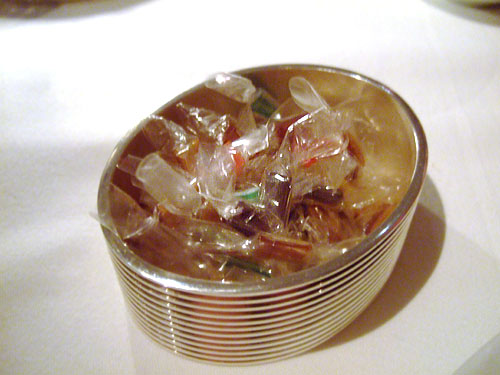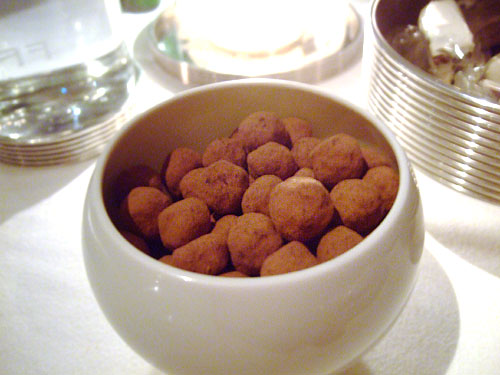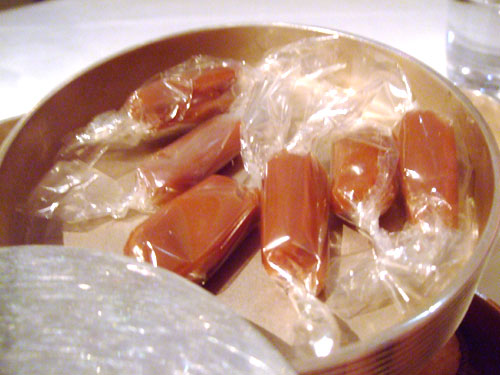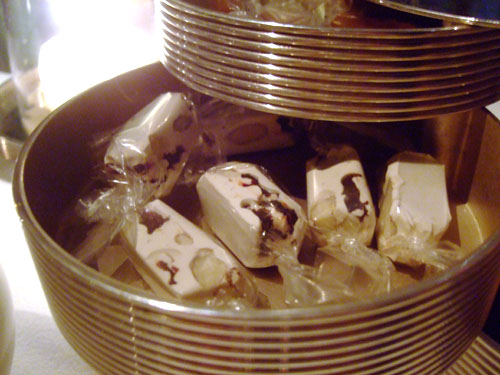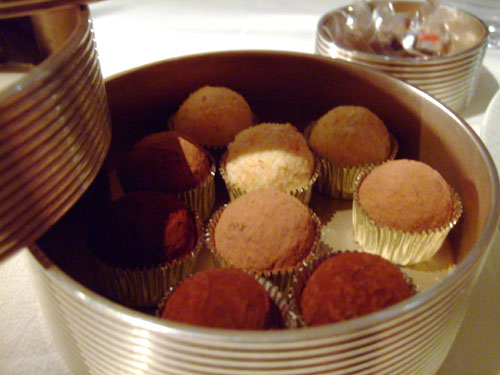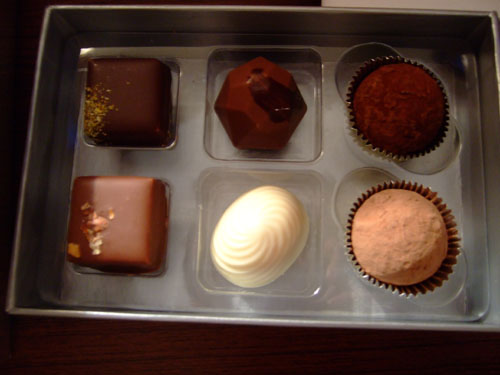Lombardi's (New York, NY)
Lombardi's
32 Spring St, New York, NY 10012
212.941.7994
www.firstpizza.com
Tue 12/23/2008, 06:35p-07:40p
To conclude my time in New York, my last meal in the City would also be a first: the first pizzeria in the country that is. Lombardi's was opened by Gennaro Lombardi over a century ago in 1897 as a grocery store. In 1905, employee Antonio "Totonno" Pero began selling tomato pies, which proved immensely popular. Lombardi's pizza was modeled after the original Neapolitan variety, though mozzarella fior di latte was substituted for Mozzarella di Bufala, and a coal oven for a wood-burning one--thus the New York pizza was born. In 1924, Totonno left Lombardi's and opened Totonno's, his own pizzeria on Coney Island that still stands today. Interestingly, the current Lombardi's isn't at the location of the original. In 1984, the original restaurant closed, but reopened a decade later at another address only a block away (the location chosen for its early 1900's-era coal oven), this time under the auspices of Jerry Lombardi, Gennaro Lombardi's grandson, and his friend John Brescio. Lombardi's is currently owned and operated by Brescio, with Lombardi having retired from the business.
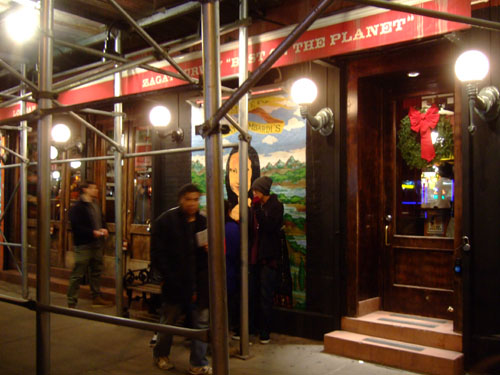
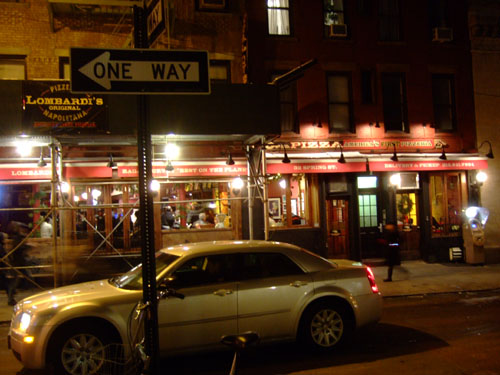
Lombardi's is located at the intersection of Spring and Mott streets in NoLIta (North of Little Italy); the area used to be part of Little Italy, but as Italians began moving out of the vicinity, the neighborhood started losing its distinctly Italian flavor. In any case, the restaurant has expanded over the years to meet increased customer demand; in the second photo, the original part of the restaurant is on the right, while the additions are to the left.
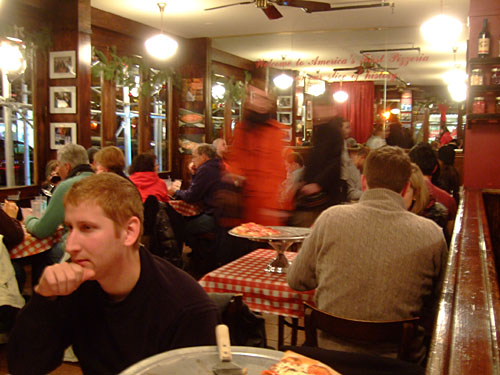
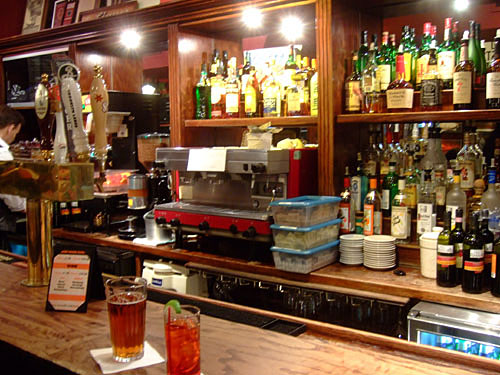
Here we see the dining room and bar in the newer part of the restaurant, near the main entrance. The new addition nearly doubled the size of the restaurant, reducing waiting times significantly.
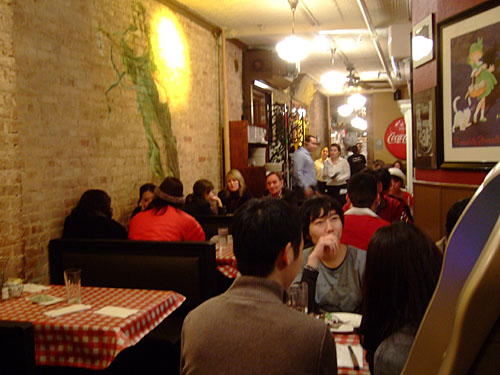
Pictured above is one half of the original space; the other half is to the right, on the other side of the wall.
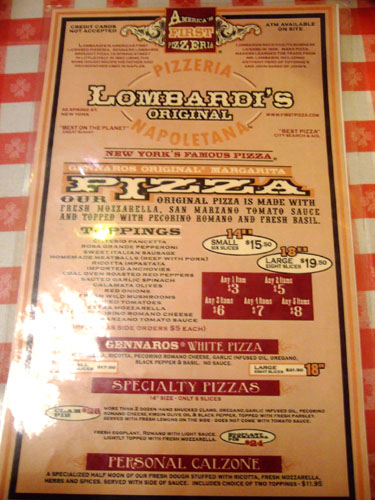
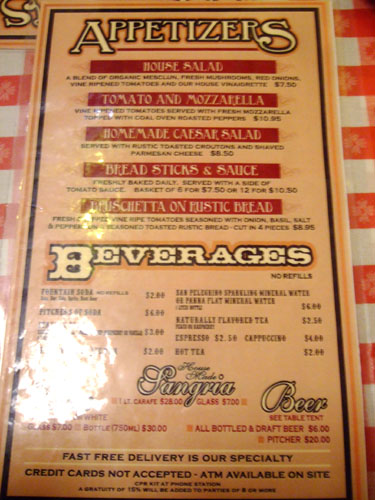
The menu is straightforward; click for larger versions. In addition to its classic Margherita pizza, Lombardi's is also well-known for its Clam Pie. The restaurant is somewhat unusual in that it does not sell pizza by the slice. Apparently, that concept was popularized by Patsy's Pizzeria in Harlem.
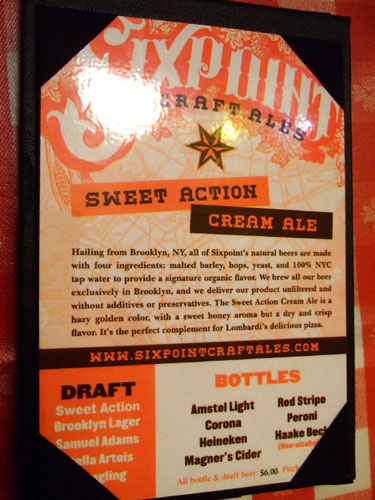
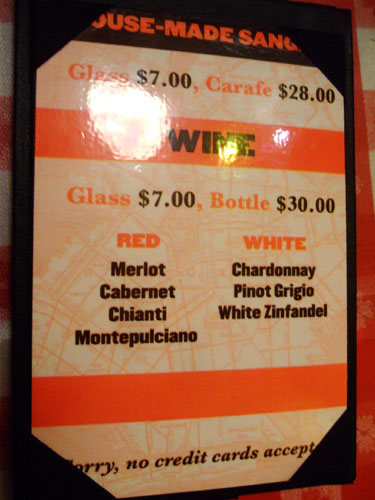
A small selection of drinks is available, including a few locally-brewed beers and some house wine. Nothing fancy, as expected. Click for larger versions.
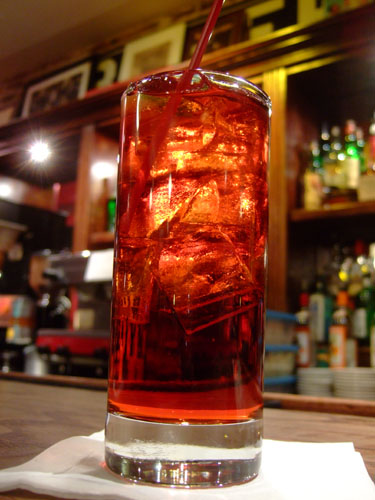
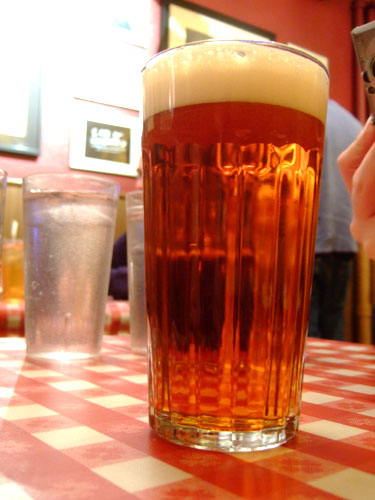
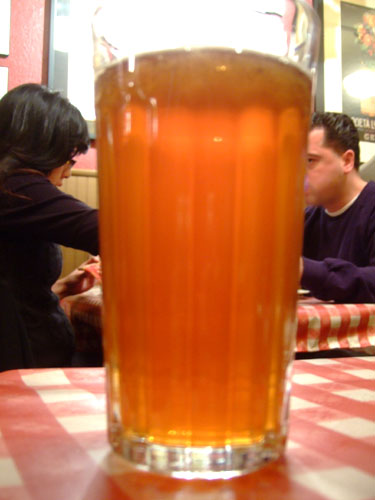
The bar couldn't do a Mojito, so I decided (based on my experience at The Bazaar) on an Americano [$8.00] instead, comprised of Campari, sweet vermouth, and club soda. Surprisingly, the bartender was unaware of the drink, having to consult an electronic guide to figure the necessary ingredients. Though not as tasty as The Bazaar's version (this one being far more bitter), I still enjoyed the drink and found it appropriate as an aperitif.
In addition, I also ordered a glass of Brooklyn Lager [$6.00] and one of Sixpoint's Sweet Action Cream Ale [$6.00]. Brooklyn Lager comes from The Brooklyn Brewery and was a fairly typical example of the style--dry and mildly hoppy with a slight bitterness--and paired well with the pizza. The Sweet Action also hails from Brooklyn, and, as can be seen above, was a much hazier beer. It had a nutty, honeyed nose but a surprisingly dry, clean, citrusy taste; I wished it were creamier, as the name would suggest.
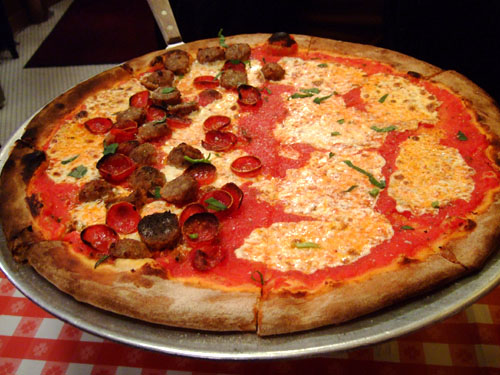
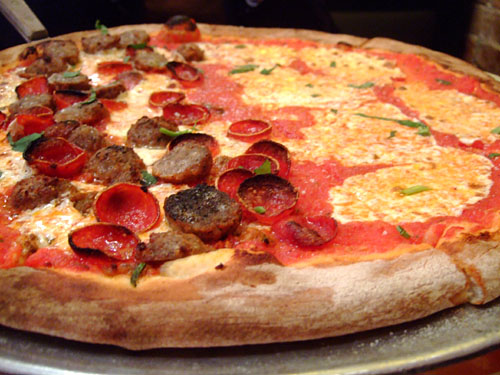
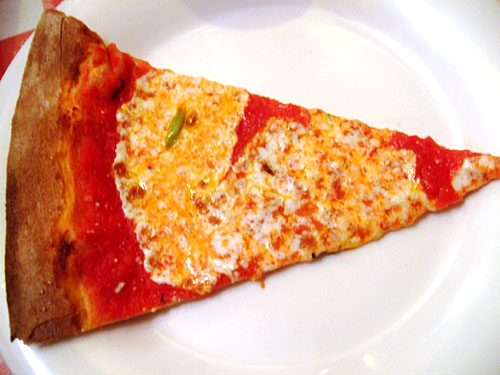
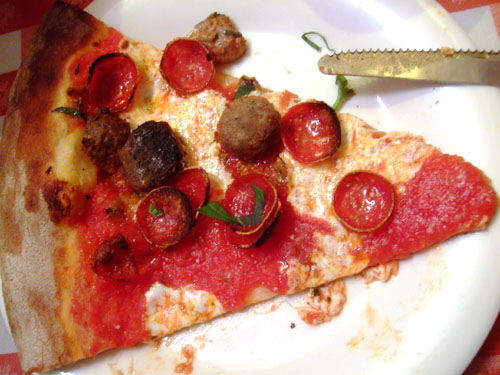
Large 18" Pizza [$19.50]
We decided to go with Gennaro's Original Margarita (Fresh Mozzarella, San Marzano Tomato Sauce, Pecorino Romano, Fresh Basil) with the signature toppings of Homemade Meatballs (Beef with Pork) and Hormel Rosa Grande Pepperoni on one half. The pizza begins with the crust, made with high-gluten flour, which is charred on the bottom by a 900-degree coal-powered heat, giving it a somewhat smoky-bitter flavor; this, however, yields a soft, almost creamy interior. The crust was indeed extremely thin, which I liked, but I thought it could've been crispier. I've heard that the secret to the crust lies in the use of New York City tap water, and that certain pizzerias outside of the City have actually imported said water for use in pizzas!
Next comes the sauce (made from puréed San Marzano tomatoes--the only type allowed in true Neapolitan pizza), which was actually quite pleasantly tart, with just a hint of basil. The use of low-moisture cow's milk mozzarella (from whole or part skim milk) along with Pecorino Romano was a nice touch as well, with the Pecorino adding a somewhat saltier tang to the milder mozzarella. Finally, the meat toppings were among the best I've had of their respective varieties, both being extraordinarily flavorful; I especially enjoyed the crispiness of the pepperoni slices.
What a world of difference compared to Famous Original Ray's! Perhaps it had something to do with the location, the aura of being at pizza ground zero, but this was truly some of the best, most memorable pizza I've had. My prior pizza experiences have been mostly with chains, so it was refreshing to see pizza done right, by pizzaiolos with a passion, a desire, to do things the right way. The result really speaks for itself, and makes me yearn for a place like this back in Southern California.
32 Spring St, New York, NY 10012
212.941.7994
www.firstpizza.com
Tue 12/23/2008, 06:35p-07:40p
To conclude my time in New York, my last meal in the City would also be a first: the first pizzeria in the country that is. Lombardi's was opened by Gennaro Lombardi over a century ago in 1897 as a grocery store. In 1905, employee Antonio "Totonno" Pero began selling tomato pies, which proved immensely popular. Lombardi's pizza was modeled after the original Neapolitan variety, though mozzarella fior di latte was substituted for Mozzarella di Bufala, and a coal oven for a wood-burning one--thus the New York pizza was born. In 1924, Totonno left Lombardi's and opened Totonno's, his own pizzeria on Coney Island that still stands today. Interestingly, the current Lombardi's isn't at the location of the original. In 1984, the original restaurant closed, but reopened a decade later at another address only a block away (the location chosen for its early 1900's-era coal oven), this time under the auspices of Jerry Lombardi, Gennaro Lombardi's grandson, and his friend John Brescio. Lombardi's is currently owned and operated by Brescio, with Lombardi having retired from the business.


Lombardi's is located at the intersection of Spring and Mott streets in NoLIta (North of Little Italy); the area used to be part of Little Italy, but as Italians began moving out of the vicinity, the neighborhood started losing its distinctly Italian flavor. In any case, the restaurant has expanded over the years to meet increased customer demand; in the second photo, the original part of the restaurant is on the right, while the additions are to the left.


Here we see the dining room and bar in the newer part of the restaurant, near the main entrance. The new addition nearly doubled the size of the restaurant, reducing waiting times significantly.

Pictured above is one half of the original space; the other half is to the right, on the other side of the wall.


The menu is straightforward; click for larger versions. In addition to its classic Margherita pizza, Lombardi's is also well-known for its Clam Pie. The restaurant is somewhat unusual in that it does not sell pizza by the slice. Apparently, that concept was popularized by Patsy's Pizzeria in Harlem.


A small selection of drinks is available, including a few locally-brewed beers and some house wine. Nothing fancy, as expected. Click for larger versions.



The bar couldn't do a Mojito, so I decided (based on my experience at The Bazaar) on an Americano [$8.00] instead, comprised of Campari, sweet vermouth, and club soda. Surprisingly, the bartender was unaware of the drink, having to consult an electronic guide to figure the necessary ingredients. Though not as tasty as The Bazaar's version (this one being far more bitter), I still enjoyed the drink and found it appropriate as an aperitif.
In addition, I also ordered a glass of Brooklyn Lager [$6.00] and one of Sixpoint's Sweet Action Cream Ale [$6.00]. Brooklyn Lager comes from The Brooklyn Brewery and was a fairly typical example of the style--dry and mildly hoppy with a slight bitterness--and paired well with the pizza. The Sweet Action also hails from Brooklyn, and, as can be seen above, was a much hazier beer. It had a nutty, honeyed nose but a surprisingly dry, clean, citrusy taste; I wished it were creamier, as the name would suggest.




Large 18" Pizza [$19.50]
We decided to go with Gennaro's Original Margarita (Fresh Mozzarella, San Marzano Tomato Sauce, Pecorino Romano, Fresh Basil) with the signature toppings of Homemade Meatballs (Beef with Pork) and Hormel Rosa Grande Pepperoni on one half. The pizza begins with the crust, made with high-gluten flour, which is charred on the bottom by a 900-degree coal-powered heat, giving it a somewhat smoky-bitter flavor; this, however, yields a soft, almost creamy interior. The crust was indeed extremely thin, which I liked, but I thought it could've been crispier. I've heard that the secret to the crust lies in the use of New York City tap water, and that certain pizzerias outside of the City have actually imported said water for use in pizzas!
Next comes the sauce (made from puréed San Marzano tomatoes--the only type allowed in true Neapolitan pizza), which was actually quite pleasantly tart, with just a hint of basil. The use of low-moisture cow's milk mozzarella (from whole or part skim milk) along with Pecorino Romano was a nice touch as well, with the Pecorino adding a somewhat saltier tang to the milder mozzarella. Finally, the meat toppings were among the best I've had of their respective varieties, both being extraordinarily flavorful; I especially enjoyed the crispiness of the pepperoni slices.
What a world of difference compared to Famous Original Ray's! Perhaps it had something to do with the location, the aura of being at pizza ground zero, but this was truly some of the best, most memorable pizza I've had. My prior pizza experiences have been mostly with chains, so it was refreshing to see pizza done right, by pizzaiolos with a passion, a desire, to do things the right way. The result really speaks for itself, and makes me yearn for a place like this back in Southern California.
